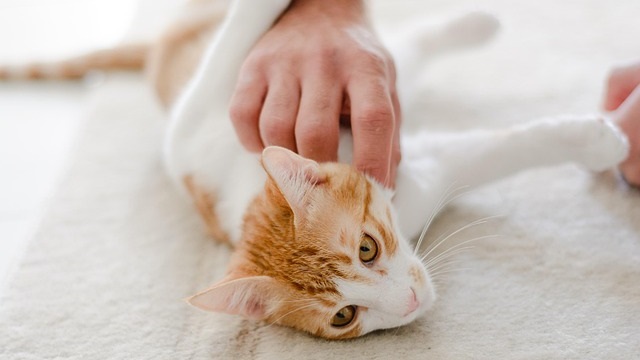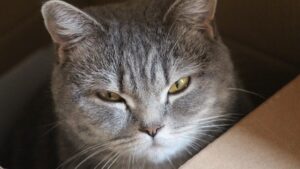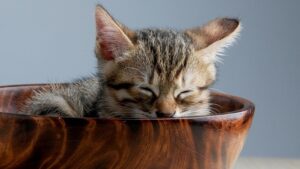Why Is My Cat So Clingy? 7 Common Reasons Behind Needy Behavior
You’re a cat owner who can’t get a moment to yourself because your overly attached feline follows you everywhere like a second shadow. We’ve all been there. Some cats follow their owners from room to room, cry when left alone, or constantly demand attention.
This is why many cat parents find themselves asking, “Why is my cat so clingy?” Despite being normal for some cats to be more affectionate than others, excessive clinginess can signal an underlying issue.
Clingy or velcro cat behavior might stem from past trauma, health issues, or changes in the home environment. In some cases, it’s simply a part of their paw-sonality. Therefore, it is vital to understand the root cause in order to address the behaviour properly. Below are seven common reasons behind this needy behavior, which can help you determine what your cat might be trying to tell you.
- Clingy behavior in cats can indicate underlying issues like stress, boredom, or health problems.
- Routine changes or environmental disruptions may trigger increased clinginess in cats.
- Boredom can lead to needy behavior, particularly in indoor cats lacking stimulation.
- Health concerns or discomfort may manifest as clinginess, requiring attention and vet consultation.
- Monitor cat behavior with tools like the Maven Pet Monitor for proactive care and insight.
Is It Normal for Cats to Be Clingy?
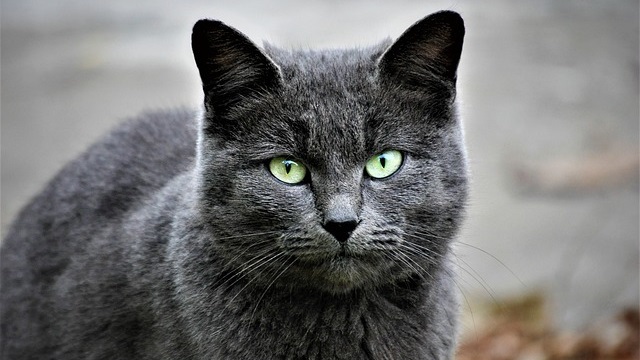
Yes, clingy cat behavior can be completely normal, depending on the context. Although cats are considered sovereign animals, some can form strong attachments to their owners and display attention-seeking actions. This includes following you around, meowing frequently, or insisting on sitting on your lap.
This behaviour may be more common in certain breeds, rescued cats with past trauma, or those raised closely with humans. However, sudden changes in clinginess can also be a sign of stress, boredom, illness, or anxiety, especially when paired with other behavioral changes like hiding, not eating, or over-grooming.
It’s essential to pay attention to your cat’s environment and routines. If clingy cat behavior starts interfering with your cat’s well-being or daily life, consult a vet or feline behaviorist to rule out medical issues or help address emotional needs through enrichment or structured interaction.
“Every time Umi is hospitalized, it’s for like four days and it costs over $5,000… Maven has helped me not only save money but also save his life”
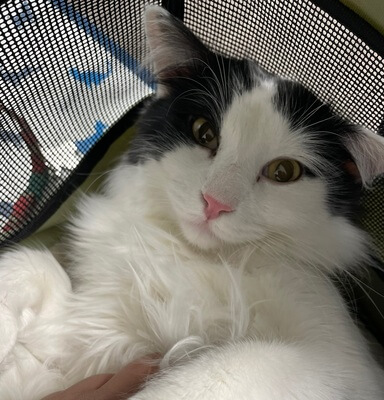
★★★★★
Jessica Ortiz
Umi
Why Is My Cat So Clingy?
As stated, cats are often stereotyped as independent, but this is not always the case. When they suddenly become overly attached, many pet owners start asking, “Why is my cat so clingy?” Below are seven reasons why your cat might be exhibiting this behavior, and understanding these can help you support their well-being.
1- Change in Routine or Environment
Cats thrive on routine, and even minor disruptions can trigger clinginess. Moving to a new home, changing your work schedule, introducing a new family member, or rearranging furniture can leave your feline feeling insecure.
If your cat shadows your every move and constantly seeks your presence, it might be their way of coping with this uncertainty. For example, after returning from a week-long vacation, you may notice your cat refusing to leave your side for days. This way, they’re trying to re-establish their temporarily lost bond and security.
2- Boredom or Lack of Stimulation
Indoor cats especially need regular mental and physical stimulation. Without it, they may become needy and demand constant petting sessions. A cat that doesn’t have access to toys, window views, or interactive play time might look to you as their only source of entertainment.
You might notice your cat pawing at your laptop or sitting directly on your book whenever you try to focus. This is their way of saying, “I’m bored, pay attention to me!” The answer to your question of why is my kitten so clingy may be boredom, which is often a top reason, especially since kittens are naturally more energetic and curious. Thus, provide toys and enough mental stimulation to ease their clinginess.
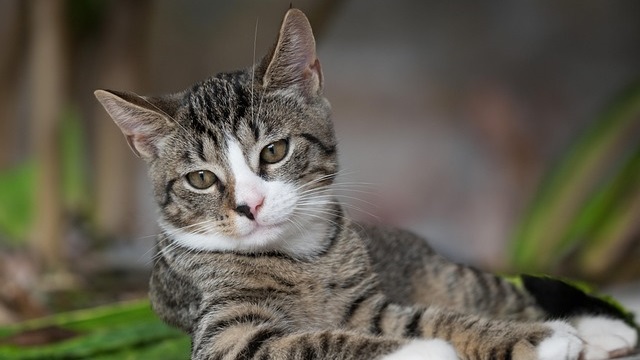
3- Illness or Discomfort
A sudden increase in clinginess can sometimes indicate your cat isn’t feeling well. Cats are good at hiding pain so they may cling to you for comfort. If your cat is unusually quiet, hiding, or showing other signs like weight loss, vomiting, or lethargy, consider this alongside the clinginess. Health issues like hormonal changes or conditions, such as cerebellar hypoplasia, can also cause your feline friend to seek extra attention.
Ever asked yourself the question – why is my cat not eating? Or – why is my cat licking me constantly? If so, you may have stumbled upon some underlying health issues or discomfort. A check-up with your vet is always a good idea if these behaviors arise together.
4- Stress or Separation Anxiety
Cats can experience anxiety, especially when left alone for long periods. This behaviour often leads to your killy becoming your sidekick when you’re home. If your cat cries outside closed doors or panics when you leave the house, separation anxiety might be the cause.
Imagine getting out of the shower, finding your cat pawing under the door, or meowing nonstop. This is their way of showing distress over being separated from you. This behavior can sometimes be more intense in rescue cats, those who experienced early-life separation from their mothers and littermates, and even cats who lost a companion and mourn. So, make sure you provide them a safe space where they can feel secure and retreat.
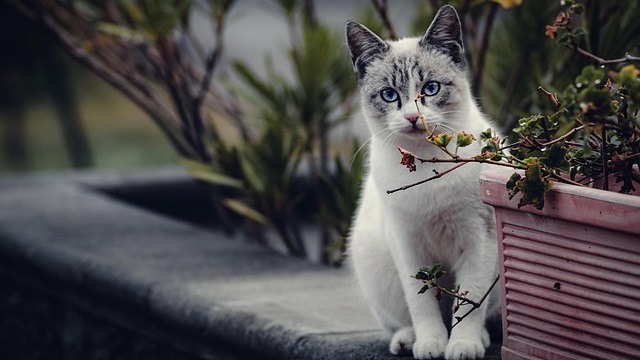
5- Recent Trauma or Vet Visit
Cats who have experienced something frightening, such as a loud noise, conflict with another animal, or a stressful vet visit, might temporarily become more dependent on their owners. For instance, after being neutered, your cat may follow you constantly for a few days and seek reassurance and comfort. Also, if your fur ball hides after a thunderstorm and then clings to you the next day, it’s a clear example of trauma-triggered neediness.
6- Aging or Cognitive Decline
Senior cats often become more vocal and seek more physical contact with their owners due to age-related changes or cognitive dysfunction. If your older cat suddenly seems disoriented or forgets where their litter box is, they might also start seeking your company more than usual. An elderly cat that follows you from room to room may be feeling confused or insecure, so they rely on your presence to navigate their environment safely.
7- Attention-Seeking
Sometimes, the answer to your my cat follows me everywhere dilemma is simply that your cat enjoys your attention. Cats are intelligent and quickly learn that meowing, sitting on your keyboard, or rubbing against your legs earns them pets or playtime. Furthermore, some breeds, such as Abyssinian and Siamese, are known for their clingy nature.
This situation is prevalent in indoor-only cats and households where the cat is the only pet or the human is frequently busy. So, if you ask,”Why does my cat need constant attention?” it might just be their affectionate way of saying, “Notice me!”
Signs That Your Cat’s Clinginess Might Be a Problem
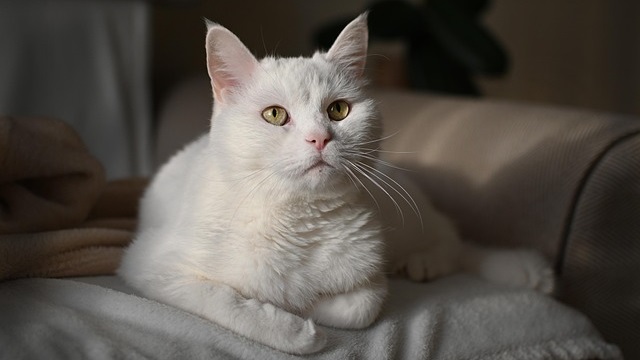
If you’ve been contemplating, “Is it normal for my cat to be clingy?”, sometimes it just is, but certain signs may point to an issue. Watch out for:
- Excessive meowing — Constant vocalizations, especially when you’re out of sight, may indicate stress or anxiety.
- Following constantly — It’s normal for cats to seek company, but it may be a sign of dependency if they trail you nonstop and can’t relax alone.
- Interrupting sleep or meals — If your feline friend wakes you up at night or won’t let you eat peacefully, they may be overly demanding.
- Distress when left alone — Signs like destructive behavior, pacing, or refusing to eat when you’re away suggest separation anxiety that may need intervention.
How the Maven Pet Monitor Can Help

When dealing with a clingy cat, the Maven Pet Monitor offers valuable insight into their behavior. This pet smart collar detects subtle shifts like increased pacing, nighttime restlessness, or sudden changes in movement, which are all early signs of stress or discomfort.
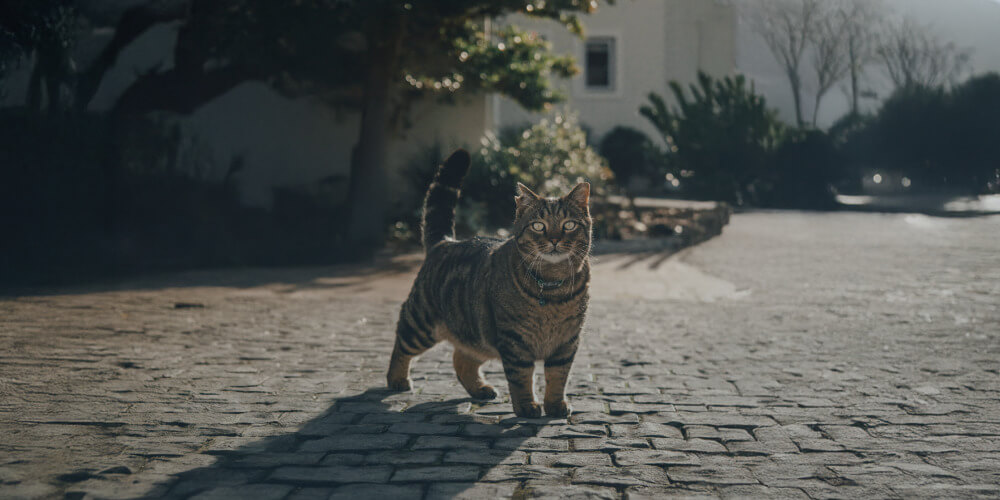
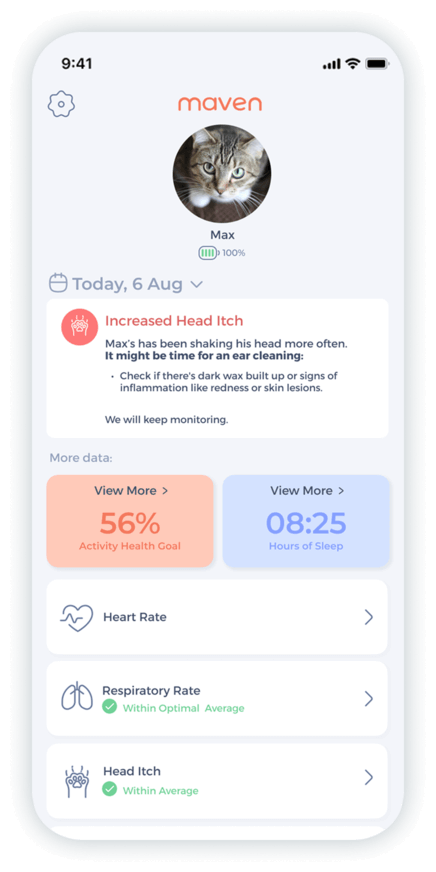
Monitor heart rate, respiratory rate, activity & rest, itch behavior.
You can determine whether your cat’s clinginess is related to anxiety or possible health issues by tracking their daily activities and routines. This supports more proactive care and gives you a clearer picture of your cat’s overall pet wellness. Since it allows you to monitor patterns over time, Maven Pet makes it easier to share relevant data with your vet when needed.
Conclusion

Some level of affection or clinginess is perfectly normal in cats, especially if they’re closely bonded with their cat parents. However, if you wonder Why is my cat so clingy? (especially when the behavior appears suddenly or becomes disruptive), it’s important to observe closely to pinpoint specific triggers for such actions.
Changes could signal stress, boredom, or even health issues that need attention. Tools like the Maven pet smart collar can help you monitor your cat’s daily routines and activity patterns and offer helpful insight into their overall well-being. It’s vital to stay informed to respond quickly to any concerns and give your cat the comfort and care they need.
Maven Pet focuses on improving the quality of life of our pets with technology, using artificial intelligence (AI) to enable proactive pet care. By accurately collecting and monitoring pet data 24/7 and flagging any irregularities, Maven Pet empowers pet parents and veterinarians to stay ahead of potential health issues, ensuring the well-being and longevity of our beloved companions.

